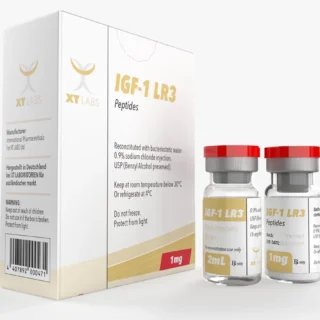Category
- Best Peptides for muscle growth
- Human Pharma Premium
- Phar Labs Premium
- Steroids on Sale USA, Real Steroids Online
- New arrivals in USA
- Most popular steroids in USA
- Antiestrogens / Gonadotropins
- Bangkok Steroid USA
- Biopharma Steroid USA
- British Dragon
- Anabolic Steroids for Horses
- Fat-burners
- Gen Pharma USA
- Medical Pharma Steroid USA
- Medical Tech Steroid USA
- Novocrine Steroids
- HGH USA
- Omega Labs Steroid USA
- Rotterdam Steroids USA
- SARMs USA
- Sciroxx Steroid USA
- Sydgroup Steroid USA
- Big vetenary Steroid USA
- Watson Steroid For Sale
- XT Labs Steroids
Most Popular steroids USA
-
 IGF-1 LR3 1mg 2 ml Xt Labs: Supercharged Muscle Growth
IGF-1 LR3 1mg 2 ml Xt Labs: Supercharged Muscle Growth
$150.00Original price was: $150.00.$130.00Current price is: $130.00. -
 FOLLISTATIN 344 XT Labs 2 ml 1mg - Benefits, Risks, and Uses
FOLLISTATIN 344 XT Labs 2 ml 1mg - Benefits, Risks, and Uses
$110.00Original price was: $110.00.$90.00Current price is: $90.00. -
 GHRP 6 Xt Labs 5mg 2 ml - Unlocking Benefits for Fitness
GHRP 6 Xt Labs 5mg 2 ml - Unlocking Benefits for Fitness
$99.00Original price was: $99.00.$79.00Current price is: $79.00.


How do I gain muscle mass?
Gain muscle mass
The physiology of hypertrophy that explains and makes it possible to gain muscle mass is complex, however the guidelines to achieve this goal are clear and well proven. Obviously muscle damage is responsible for any gains in muscle mass.
The damage produced in the fibers during training initiates an inflammatory response that activates the production of myokines that initiate a whole process of release of many muscle growth factors, which in turn generate the proliferation of satellite cells. In order to obtain sufficient guarantees to ensure this process, the following guidelines must be taken into account:
• Caloric surplus: For a muscle to grow, training is necessary that provides reasons for it, but it is equally important to facilitate adaptation to this stimulus with extra energy at a nutritional level, therefore the diet of every bodybuilder must suppose a caloric surplus estimated at approximately 10%-20%.
• Intensity training: What determines the stimulus of a training is the effort load, that is, the important thing is that the weight lifted determines a sufficient level of effort. This is determined when series are performed with a weight and repetitions that prevent any repetition more than the established ones.
• Perform a minimum of 20 series: Per week and muscle with enough repetitions so that the last repetition causes failure.
Essential tips to gain muscle mass
It is important to clarify that a muscle is much more than a simple tissue that allows joint movement. The musculature is related to health, therefore developing a significant muscle mass helps to live longer and better. With that said, it should be understood that there are 2 key factors involved in gaining muscle mass:
• Mechanical tension: Muscles only hypertrophy when they overcome resistance, that is, when applying force. This is called mechanical stress.
• Metabolic stress: For an applied force to be efficient, it must generate cellular stress, such that factors such as lactate accumulation, hypoxia, inflammation, myokines or free radicals can precipitate hypertrophy.
Although there is much debate about the relevance of both factors, everything seems to indicate that mechanical tension is the most important, since a certain muscle mass can be developed without generating too much metabolic stress, however, to aspire to a greater muscle mass the tension The mechanics should be raised gradually to challenge muscle memory, since if similar weights are always lifted, the muscles get used to it and do not hypertrophy anymore. This is the concept is called progressive overload, and there are different ways to precipitate it:
• Lifting more and more weight.
• Performing increasingly difficult exercises in training.
• Increasing the number of repetitions with the same weight.
• Reducing rest time.
• Increasing the range of motion of an exercise.
• Performing 5 to 6 workouts per week.
• Taking enough of supplements added to the diet.
Muscle gain according to science
Muscle mass gain or muscle hypertrophy is understood as the increase in size of muscle tissue by enlarging its cells. There are two types of hypertrophy:
• Myofibrillar hypertrophy: which is produced by an increase in the number and size of myofibrils in the fibers, that is, this type of hypertrophy is based on an increase in the number and size of the myofibrils found within the muscle fibers, which gives it a denser and rockier appearance, with a relevant gain in strength.
• Sarcoplasmic hypertrophy: which is understood as an increase in the amount of fluid retained in the skeletal muscle, called sarcoplasm. The sarcoplasm is a gel-like substance, located in the muscle cell, which is vital for its maintenance, and includes substances such as proteins, water, collagen, glycogen, etc. This type of hypertrophy is not functional since it does not produce strength gains, that is, it has a more voluminous appearance but does not have a greater pulling force.
Increased lean muscle mass is sought after, not only by bodybuilders, but also by all athletes and males in general, albeit to a lesser degree, and is the consequence of the correlation between muscle cross-sectional area and muscle strength.
In those people who start training in the gym, muscle hypertrophy is practically non-existent during the initial stage of training, although with gains in strength as a result of neural adaptations, however, after a few months of training, hypertrophy becomes the dominant factor, especially in the upper extremities, where hypertrophy is shown before the lower extremities.
It has been possible to corroborate that genetic background such as age, sex and other factors intervene in the hypertrophic response to training, affecting both the rate and the total amount of gains in lean muscle mass. It should also be considered that it becomes progressively more difficult to gain muscle mass as training progresses, forcing you to change your routine from time to time to circumvent muscle memory.
Muscle hypertrophy should be considered different from muscle hyperplasia. During hypertrophy, the contractile elements enlarge and the extracellular matrix expands to support growth, in contrast to hyperplasia, which results from an increase in the number of fibers within a muscle. Muscle hypertrophy occurs by adding sarcomeres either in series or in parallel.
Most exercise-induced hypertrophy in a traditional training routine is the result of increased sarcomeres and myofibrils added in parallel. When skeletal muscle is subjected to an overload stimulus, variations in the myofibers and their related extra-cellular matrix occur. This triggers a chain of myogenic effects leading to an increase in the size and amounts of myofibrillar contractile proteins such as actin and myosin, and the total number of sarcomeres that are positioned in parallel, thus increasing the diameter of the fibers individuals, resulting in an increase in volume in muscle cross-sectional area.
A serial increase in these sarcomeres results in a muscle length corresponding to the shorter sarcomere length. Serial hypertrophy has been shown to occur when the muscle is forced to adapt to a new functional length. There is evidence that certain exercises affect the number of sarcomeres in series. Lynn R. & Morgan D.L. (Journal of Applied Physiology 1994) showed that when laboratory rats walked up an incline treadmill, they had a lower serial sarcomere count than those rats going downhill, i.e. on a declined treadmill. This suggests that repeated eccentric exercise actions lead to an increased number of sarcomeres in series, whereas concentric exercises result in a serial decrease in sarcomere length.
All studies carried out imply that increases in sarcoplasmic hypertrophy are produced specifically by training with resistance exercises. This belief was already consolidated by previous studies that show how muscle hypertrophy is different in bodybuilders than in other athletes. Specifically, bodybuilders tend to show a higher proliferation of fibrous endomysial connective tissue, and a higher glycogen content compared to other athletes.
Frequently asked questions about gaining muscle mass
What foods are recommended to gain muscle mass?
The most recommended foods to gain muscle mass are beef, chicken or turkey breast, eggs, salmon and tuna.
How long does it take to gain muscle mass?
To gain muscle mass it is essential to undergo training in the gym. The results in terms of increased strength will begin to be noticed after the first 2 months, and in terms of muscle volume after the first trimester
Share this page:
- Click to share on Twitter (Opens in new window)
- Click to share on Facebook (Opens in new window)
- Click to email a link to a friend (Opens in new window)
- Click to share on LinkedIn (Opens in new window)
- Click to share on Reddit (Opens in new window)
- Click to share on Pinterest (Opens in new window)
- Click to share on Telegram (Opens in new window)
- Click to share on WhatsApp (Opens in new window)
- Click to share on Tumblr (Opens in new window)
Written by Steroids USA
Pay with WISE APP or Remitly
Pay with WISE App or Remitly
Fast money transfers from USA for fast delivery of steroids
Secure delivery in USA
100% reliable shipping in USA
24x7 Support
Online 24 hours
Low cost delivery
Great shipping prices in USA
BULK ORDER DISCOUNT
If you are a reseller in the USA you can get a special DISCOUNT, we can give you up to 50% or more on bulk orders. If you want to make a bulk order, we can negociate for orders of over USD$4,000, contact us by email.
Steroids info






